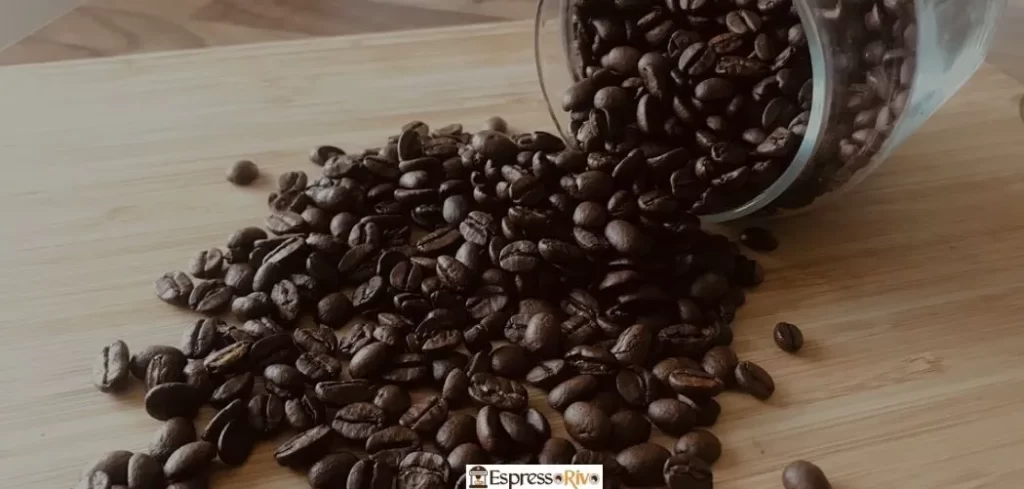Coffee is one of the most popular and beloved beverages in the world, consumed by millions of people on a daily basis. While there are many factors that can affect the taste and quality of a cup of coffee, the type of coffee bean used is one of the most important.
There are two main types of coffee beans that are commonly used in coffee production: Robusta and Arabica. While both of these beans can be used to create delicious coffee, there are significant differences between them that can affect the taste, aroma, and overall quality of the final product.
In this article, we’ll take a closer look at the differences between Robusta and Arabica coffee beans. We’ll explore the history and origins of each bean, their physical characteristics and flavor profiles, their nutritional and caffeine content, their uses in coffee production, and the market demand and pricing for each bean.
By the end of this article, you’ll have a better understanding of the key differences between Robusta and Arabica coffee beans, and be better equipped to choose the right coffee for your taste preferences. So, grab a cup of coffee and let’s dive in!
Origins and History of Robusta and Arabica Coffee Beans
Coffee has been cultivated for centuries, and today it is one of the most widely traded commodities in the world. Both Robusta and Arabica coffee beans have a rich history and fascinating origin stories.
Arabica coffee beans are believed to have originated in the highlands of Ethiopia, where they were first cultivated over 1,000 years ago. Arabica coffee is now grown in many countries around the world, including Brazil, Colombia, and Ethiopia, and it accounts for around 60% of the world’s coffee production. Arabica beans are known for their complex and nuanced flavors, and they are often described as having notes of fruit, chocolate, and nuts.
Believed to have originated in West Africa, and they were first introduced to the coffee industry in the late 19th century. Robusta beans are now grown primarily in countries like Vietnam, Uganda, and Brazil, and they account for around 40% of the world’s coffee production. Robusta beans are known for their bold, earthy flavor, and they are often used in espresso blends for their high caffeine content and crema-producing qualities.
While both Robusta and Arabica coffee beans have a long and storied history, their origins and cultivation processes have led to key differences in their flavor profiles and uses in coffee production. Understanding these differences can help coffee lovers appreciate the unique qualities of each bean and choose the right coffee for their taste preferences.
Physical Characteristics and Flavor Profile
One of the key differences between Robusta and Arabica coffee beans is their physical characteristics and flavor profile. Let’s take a closer look at each of these factors.
Robusta coffee beans are generally smaller and rounder than Arabica beans, and they have a thicker outer layer. They also contain more caffeine than Arabica beans, which gives them a bitter, earthy flavor. Robusta beans are often described as having a “rubbery” or “woody” taste, with notes of peanut and chocolate. They are typically used in blends to enhance the crema and body of the coffee.
On the other hand, are larger and flatter than Robusta beans, with a thinner outer layer. They contain less caffeine than Robusta beans, which gives them a smoother, sweeter flavor. Arabica beans are known for their complex flavor profile, with notes of fruit, nuts, and chocolate. They are often used in specialty coffee blends and single-origin coffee to highlight their unique characteristics.
It’s worth noting that the flavor profile of both Robusta and Arabica coffee beans can vary depending on factors such as where they are grown, how they are roasted, and how they are brewed. However, the physical characteristics and caffeine content of each bean play a significant role in determining their overall flavor profile.
Whether you prefer the bold, earthy taste of Robusta coffee or the nuanced flavors of Arabica coffee, understanding the physical characteristics and flavor profile of each bean can help you choose the right coffee for your taste preferences.
Nutritional Content and Caffeine Content
In addition to their physical characteristics and flavor profiles, Robusta and Arabica coffee beans also differ in their nutritional content and caffeine content.
Robusta coffee beans contain almost twice as much caffeine as Arabica beans, with an average caffeine content of around 2.7% compared to Arabica’s 1.5%. This higher caffeine content gives Robusta coffee a stronger, more intense buzz than Arabica coffee. However, it’s worth noting that the caffeine content can vary depending on the roast, grind, and brewing method.
In terms of nutritional content, both Robusta and Arabica coffee beans are low in calories and fat, making them a great choice for those watching their weight. They also contain antioxidants, which have been linked to a range of health benefits, including reduced inflammation and a lower risk of chronic diseases such as heart disease and type 2 diabetes.
It’s worth noting that the nutritional content of coffee can vary depending on the brewing method and any additives you use, such as milk or sugar. For example, adding cream and sugar to your coffee can significantly increase its calorie and fat content.
Both Robusta and Arabica coffee beans can be a healthy part of your diet, providing antioxidants and a moderate amount of caffeine. However, if you’re looking for a stronger, more intense buzz, Robusta coffee may be the better choice due to its higher caffeine content.
Uses in Coffee Production
Both Robusta and Arabica coffee beans have their place in coffee production, but they are used in different ways.
Coffee beans are often used in blends, particularly those aimed at creating a strong, bold flavor with a thick crema. Because of their high caffeine content and thicker outer layer, they can withstand the high pressures and temperatures required for espresso brewing without losing their flavor profile. Robusta beans are also less expensive than Arabica beans, making them a popular choice for coffee blends that need to be produced in large quantities.
Arabica coffee beans, on the other hand, are often used in specialty coffee blends and single-origin roasts. Because of their nuanced flavor profile, they are often highlighted in lighter roasts that allow their flavors to shine through. Arabica beans are also prized for their sweetness and acidity, which can be difficult to replicate with other coffee beans.
The uses of Robusta and Arabica coffee beans in coffee production depend on the desired flavor profile and brewing method. While Robusta beans are often used in blends to enhance body and crema, Arabica beans are often used in specialty coffee blends and single-origin roasts to highlight their unique characteristics.
Market Demand and Pricing
The market demand and pricing for Robusta and Arabica coffee beans vary greatly due to their differences in flavor profile and popularity among coffee consumers.

Coffee beans are the most popular coffee beans in the world, making up around 60% of global coffee production. They are highly sought after for their nuanced flavor profile, which can range from fruity and floral to nutty and chocolatey, depending on the origin and roast level. Arabica beans are also associated with high-quality specialty coffee and command a premium price compared to Robusta beans.
In contrast, Robusta coffee beans are less popular among coffee consumers and make up around 40% of global coffee production. They are often considered lower quality than Arabica beans due to their harsher, more bitter flavor profile. However, they are still an important part of the coffee industry, particularly in espresso blends and instant coffee production. Robusta beans are also less expensive than Arabica beans, making them a popular choice for coffee blends that need to be produced in large quantities.
The pricing for Robusta and Arabica coffee beans can vary widely depending on factors such as origin, roast level, and market demand. Arabica beans typically command a higher price due to their popularity among specialty coffee consumers, while Robusta beans are often sold at a lower price point. However, it’s worth noting that the pricing for both types of coffee beans can fluctuate due to factors such as weather conditions, crop yields, and market demand.
Market demand and pricing for Robusta and Arabica coffee beans reflect their differences in flavor profile and popularity among coffee consumers. While Arabica beans command a higher price due to their nuanced flavor profile and association with specialty coffee, Robusta beans are still an important part of the coffee industry, particularly in espresso blends and instant coffee production.
Conclusion
Flavor profiles, nutritional content, and market demand. While Arabica beans are more popular and command a higher price due to their nuanced flavor profile and association with specialty coffee, Robusta beans are still an important part of the coffee industry, particularly in espresso blends and instant coffee production.
Understanding the differences between Robusta and Arabica coffee beans can help coffee lovers and industry professionals make informed decisions about coffee sourcing, roasting, and brewing. Whether you prefer the nuanced flavor profile of Arabica or the bold, intense flavor of Robusta, there is a coffee bean out there for everyone.
At the end of the day, it’s important to remember that coffee is a subjective experience, and what matters most is finding the coffee that you personally enjoy the most. So go ahead and explore the world of coffee, try new varieties and roast levels, and enjoy the wonderful flavors and aromas that this beloved beverage has to offer.
Ronsil
Meet Ronsil, the master barista behind EspressoRivo. With years of experience in the coffee industry, he brings a wealth of knowledge and passion to the table. As the owner of a successful coffee shop, Ronsil is a sought-after adviser in the field. His expertise and love for the craft shines through in every cup he serves. We are honored to have him as part of our team at EspressoRivo






